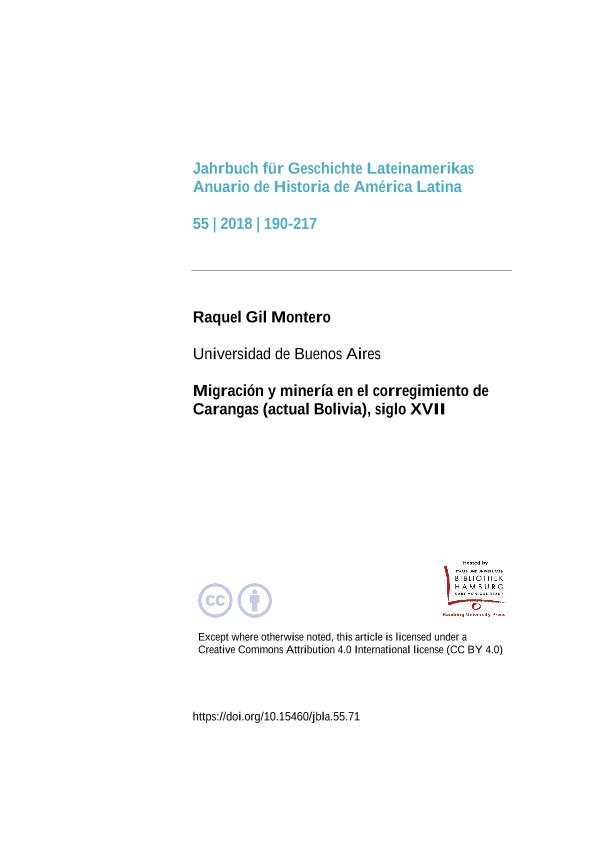Artículo
Carangas fue uno de los corregimientos de Charcas (actual Bolivia) que más se despobló durante el período colonial, en parte por la obligación que tenía de enviar tributarios para trabajar en las minas e ingenios de Potosí. Esta tendencia demográfica se vio levemente revertida hacia mediados del siglo XVII, cuando se descubrieron en su territorio unas vetas de plata que requirieron trabajadores, aunque en un número relativamente pequeño. En este trabajo se analiza el doble proceso: la salida de mano de obra carangas, destinada a distintos emprendimientos mineros y agrarios, y la llegada de trabajadores así como la redistribución de parte de su población en los asientos mineros locales. Entre los resultados alcanzados destaco que la mitad de la población que había emigrado de Carangas estaba viviendo en algún asiento minero, entre los que sobresale Potosí. Las fuentes presentan algunas dificultades para cuantificar las migraciones, en particular algunas categorías que se utilizaron previamente en estos temas - como la de los forasteros -, aunque incluyen parcialmente el lugar de origen, dato que permite mejorar el análisis. During colonial times, Carangas was one of the most depopulated provinces of Charcas (present-day Bolivia), partly because of its obligation to send tributaries to work in the mines and mills of Potosí. This demographic trend was subtly reversed towards the middle of the seventeenth century, when silver veins were discovered in Carangas. Those mines required laborers, although in a relatively small number. The main purpose of this article is to analyze this double process: on the one hand, the emigration of manpower to different mining and agrarian enterprises; on the other hand, the arrival of laborers and the redistribution of parts of the population of Carangas in the local mining camps. Among the results of these developementsI want to focus the fact that half of the population that had emigrated from Carangas was living in mining camps, principally in Potosí. The sources present some difficulties to quantify these migrations, in particular to substantiate some categories that were previously used in this context - the forasteros. They include, however, the places of origin, information that facilitate migration analysis.
Migración y minería en el corregimiento de Carangas (actual Bolivia), siglo XVII
Fecha de publicación:
12/2018
Editorial:
Hamburg University Press
Revista:
Jahrbuch für Geschichte Lateinamerikas = Anuario de Historia de América Latina
e-ISSN:
2194-3680
Idioma:
Español
Tipo de recurso:
Artículo publicado
Clasificación temática:
Resumen
Palabras clave:
DESPOBLAMIENTO
,
MANO DE OBRA
,
VISITAS COLONIALES
,
MINERÍA
Archivos asociados
Licencia
Identificadores
Colecciones
Articulos(INSTITUTO "DR. E.RAVIGNANI")
Articulos de INST. DE HISTORIA ARGENTINA Y AMERICANA "DR. EMILIO RAVIGNANI"
Articulos de INST. DE HISTORIA ARGENTINA Y AMERICANA "DR. EMILIO RAVIGNANI"
Citación
Gil Montero, Raquel; Migración y minería en el corregimiento de Carangas (actual Bolivia), siglo XVII; Hamburg University Press; Jahrbuch für Geschichte Lateinamerikas = Anuario de Historia de América Latina; 55; 12-2018; 190-217
Compartir
Altmétricas




